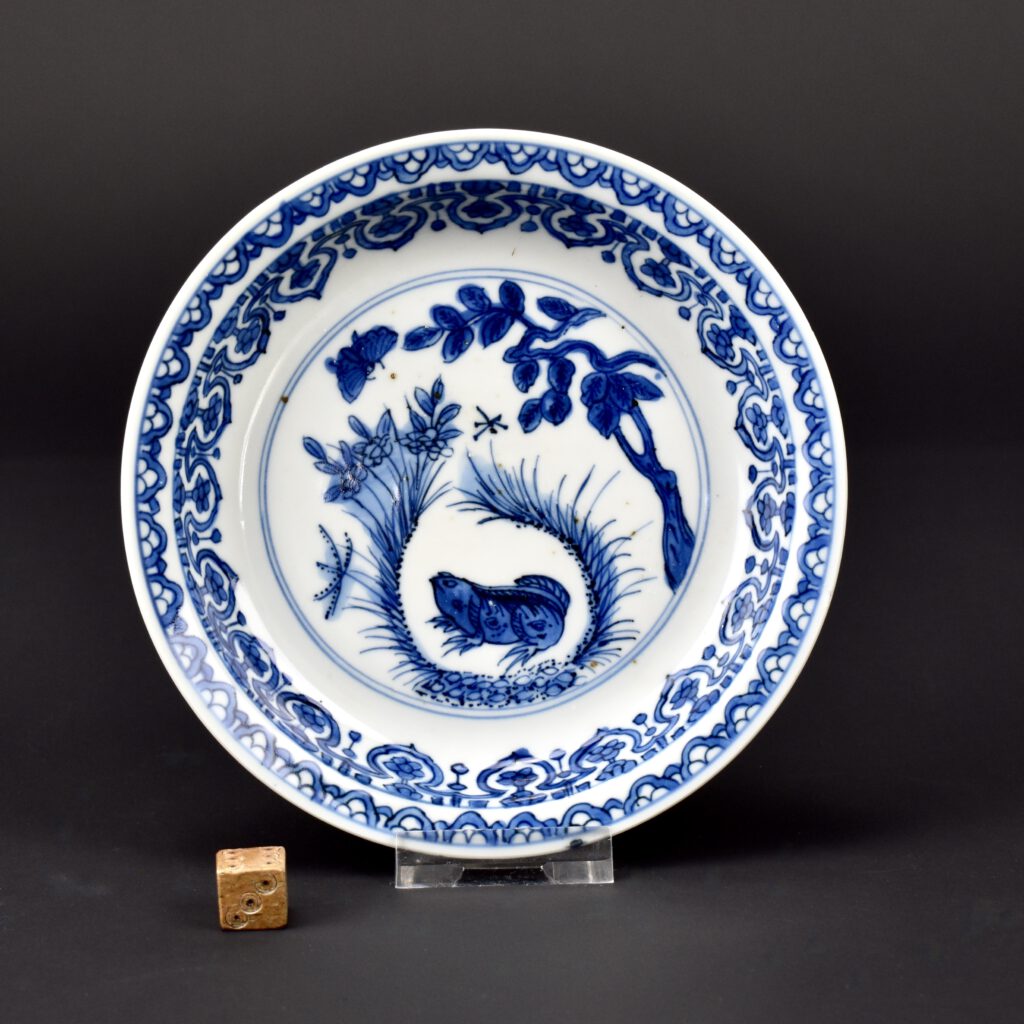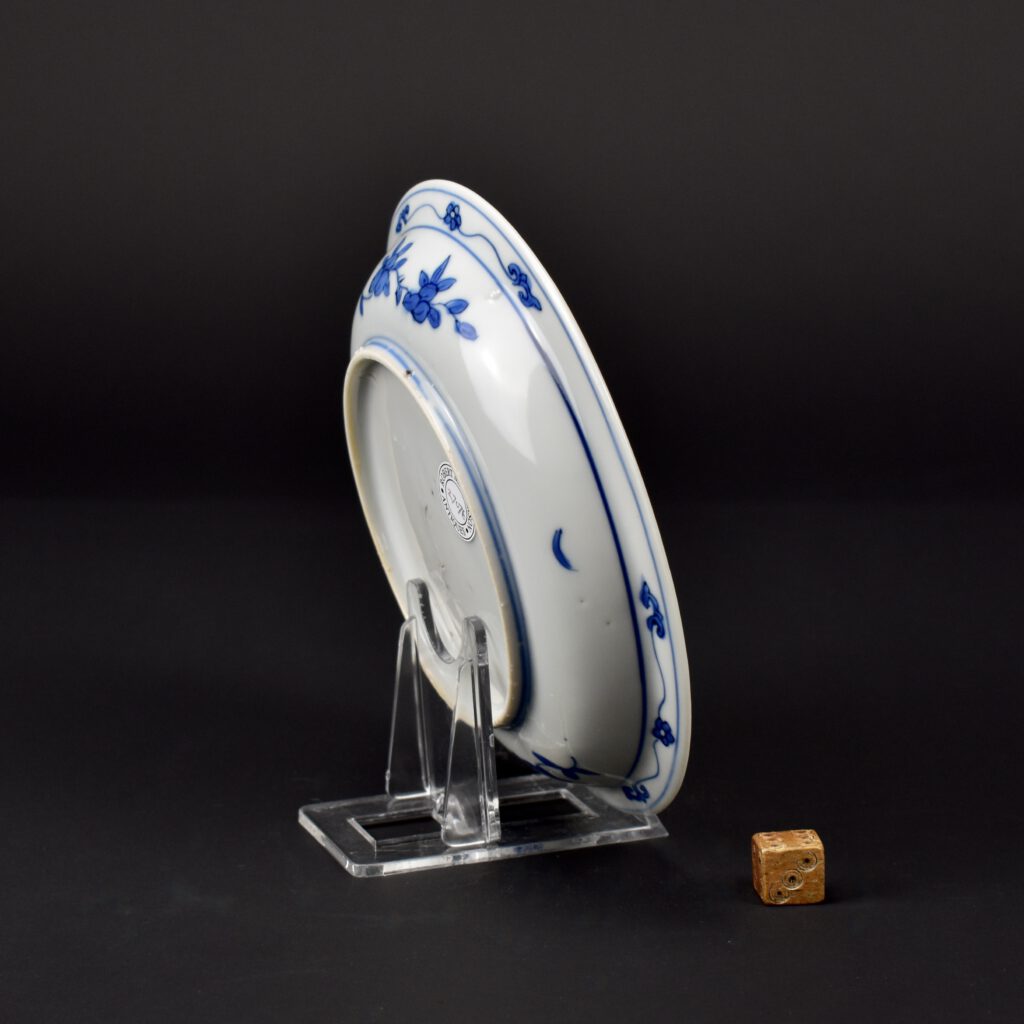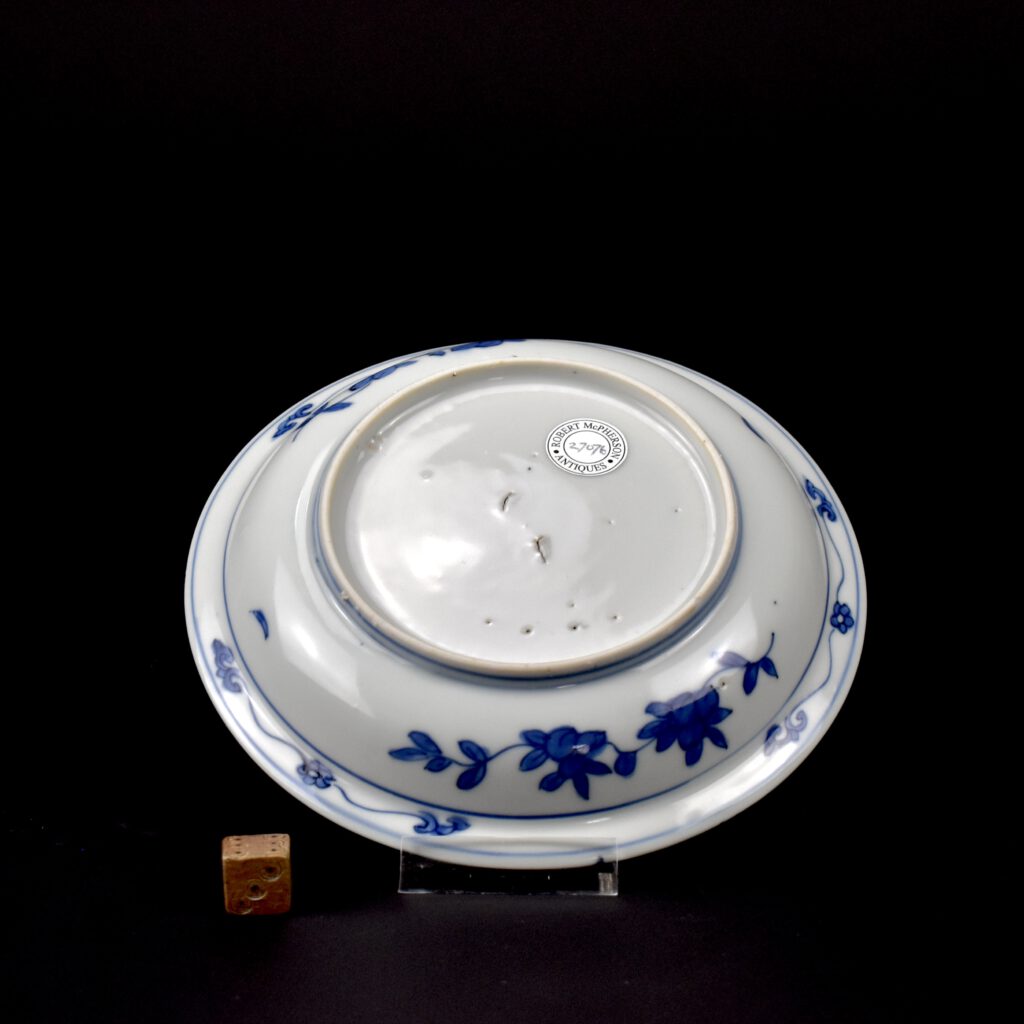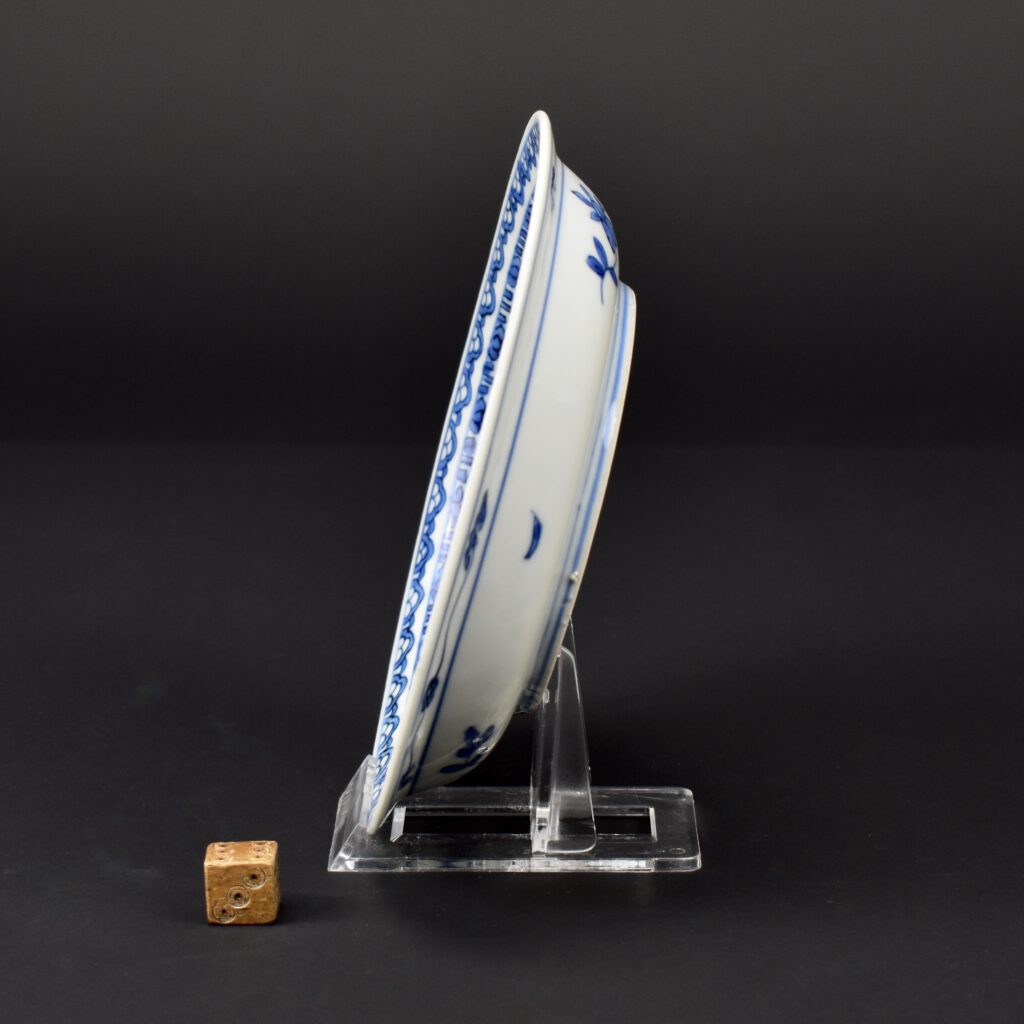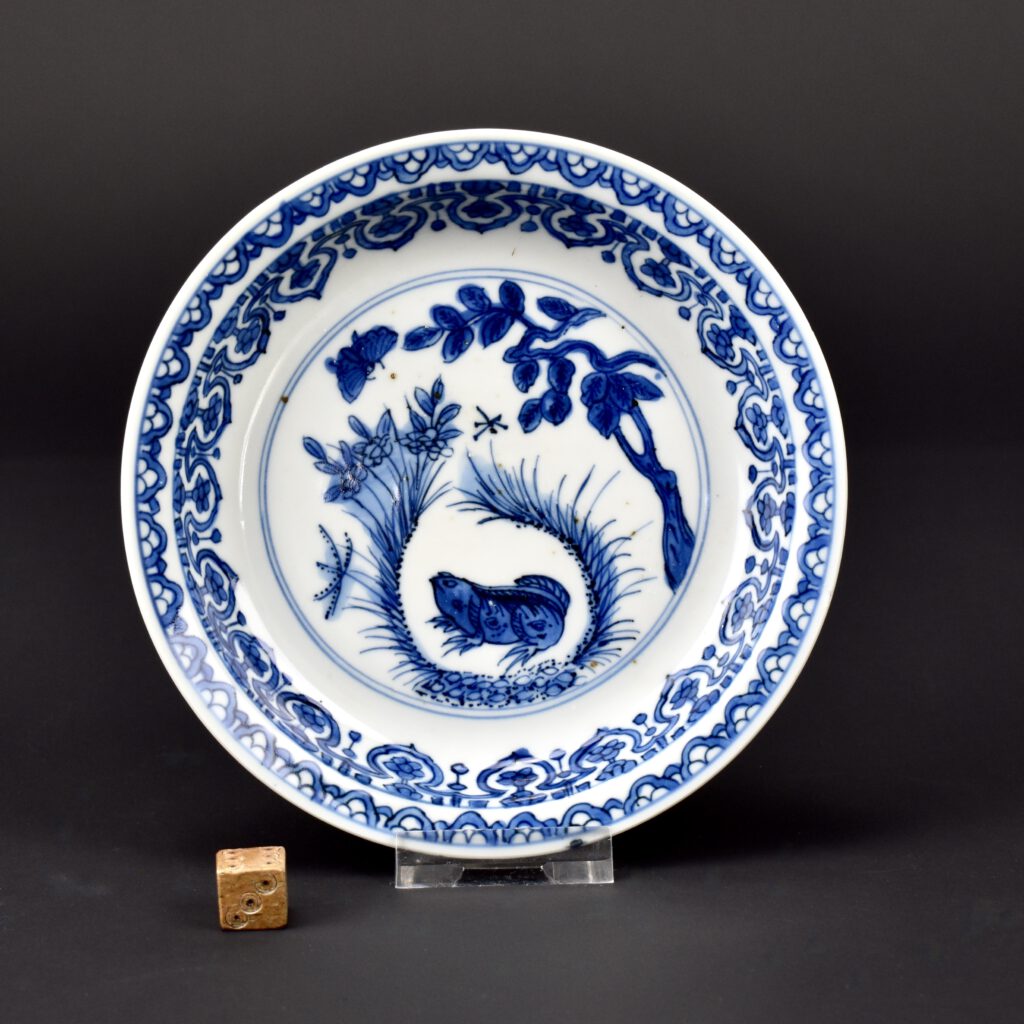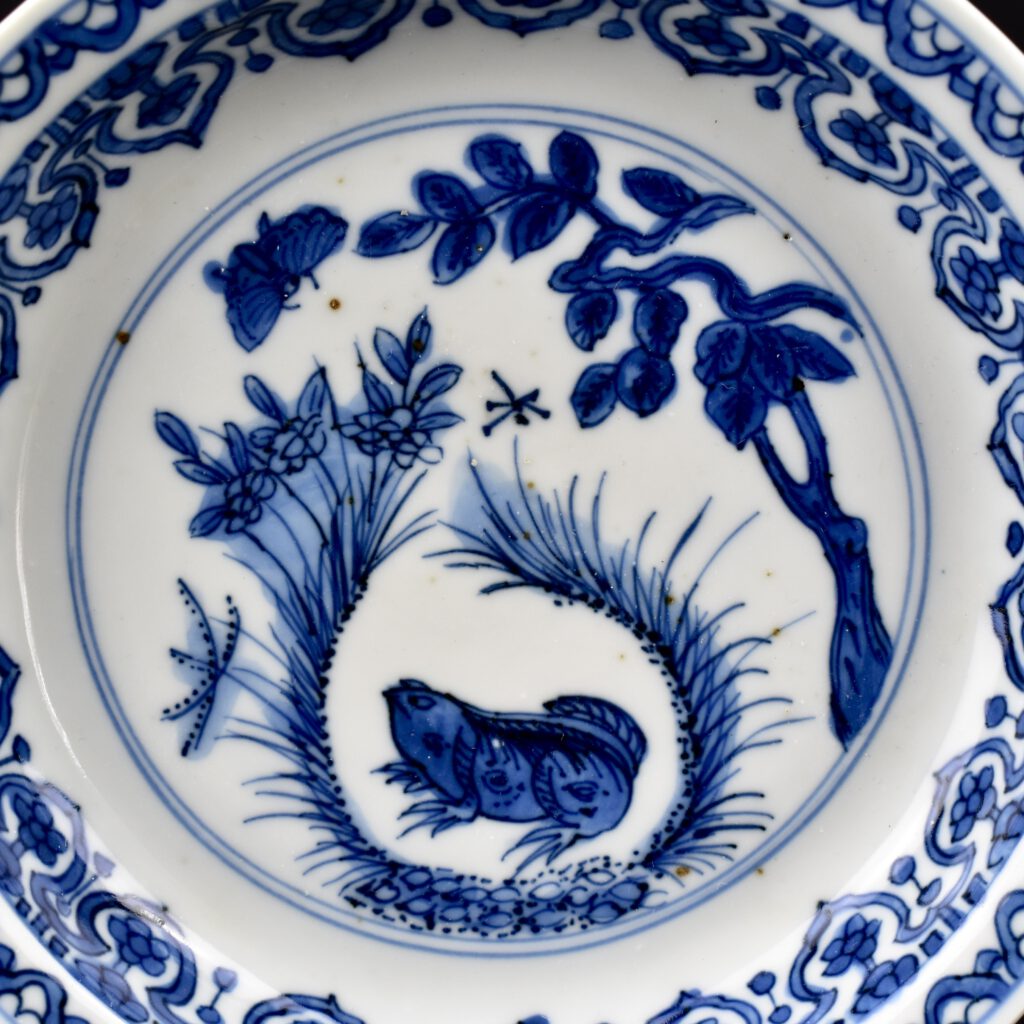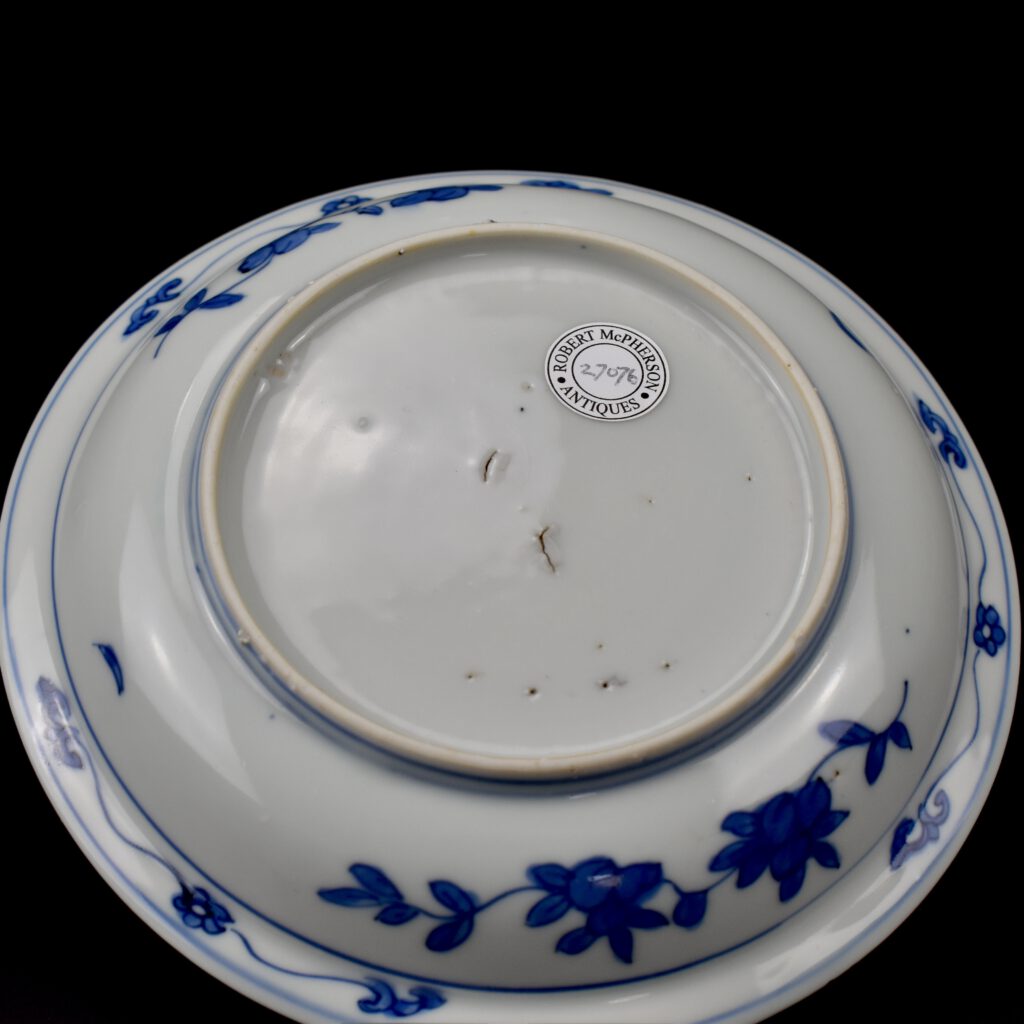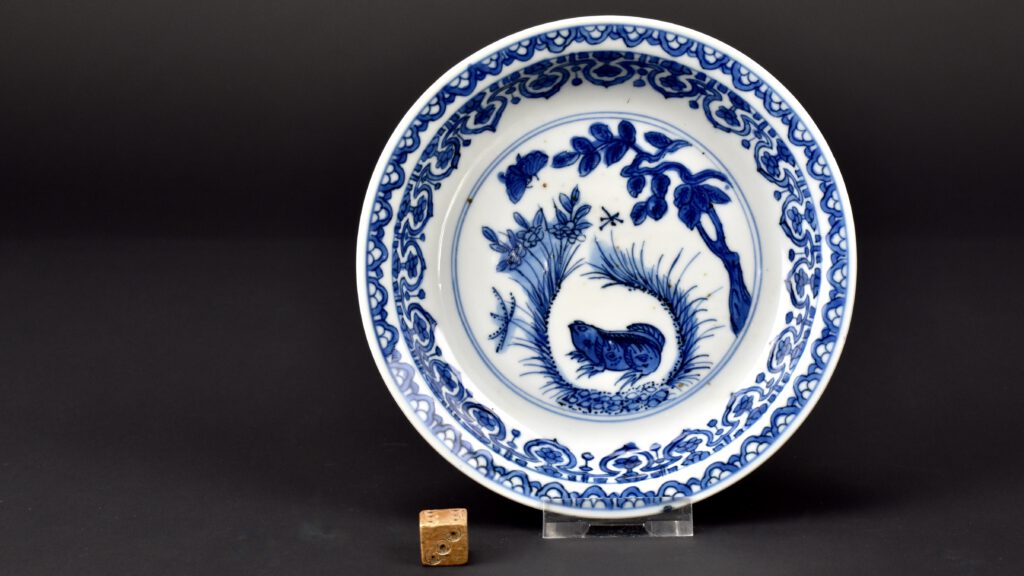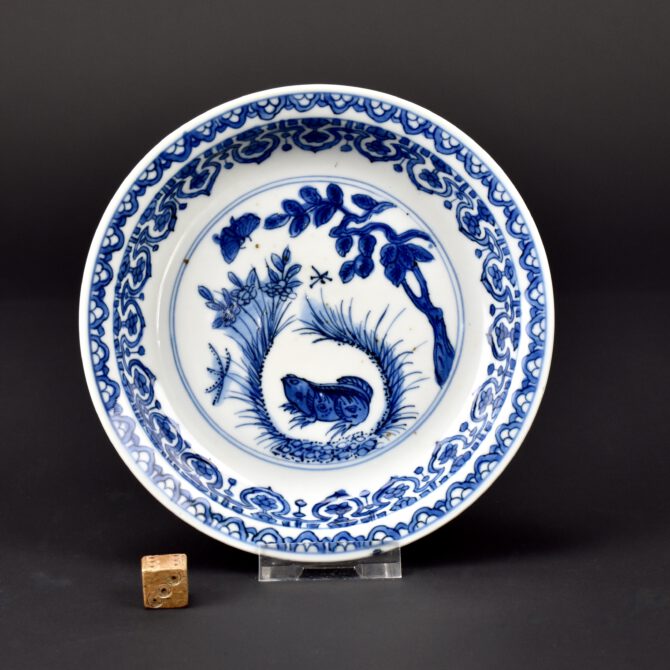
A Ming Blue and White Porcelain Frog Dish
A Small Ming Blue and White Porcelain Frog Dish, Jiajing to early Wanli c.1560-1585. This saucer shaped dish is probably an early example of Ko-Sometsuke, blue and white Chinese export made for the Japanese market, see below the Photograph Gallery. Is thinly potted with an everted rim. In painted in rich tones of cobalt blue with a scene of a crouching frog, blow are stones or possibly frogsborn. The frog is surrounded by grasses and flowers, with a tree and a butterfly. The cavetto with a band of ruyi with pendants. The narrow border is based on stylised leaves. The underside with two fruiting peach branches divided by half moons. For a set of five dishes of this design see, Exhibition of Ming Blue and White : Jiajing – Chongzhen, Including Dated Examples (S.Marchant & Son, London 2004).
See below for more photographs and references.
SOLD
- Condition
- In excellent condition, a few minor kiln spots.
- Size
- Diameter 13.8 cm (5 1/2 inches).
- Provenance
- N/A
- Stock number
- 27076
- References
- For a set of five dishes of this design see, Exhibition of Ming Blue and White : Jiajing - Chongzhen, Including Dated Examples (S.Marchant & Son, London 2004) page 22, 15 a-e. Another dish is illustrated by Richard S.Kilburn in : Transitional Wares and their Forerunners (Hong Kong : Oriental Ceramic Society of Hong Kong. 1981).
Information
Ko-Sometsuke is a term used to describe Chinese blue and white porcelain made for Japan. This late Ming porcelain was made from the Wanli period (1573-1620), through the Tianqi period (1621 - 1627) ending in the Chongzhen period (1628-1644), the main period of production being the 1620'2 and 1630's. This porcelain made in China for Japanese reflected a rise in interest of the Japanese tea ceremony but it also coincided with the beginning of porcelain production in Japan (from c.1610/20). The porcelain objects produced in China were made especially for the Japanese market, both the shapes and the designs were tailored to Japanese taste, the production process too allowed for Japanese aesthetics to be included in the finished object. Its seems firing faults were added, repaired tears in the leather-hard body were too frequent to not, in some cases, be deliberate. These imperfections as well as the fritted Mushikui (insect-nibbled) rims and kiln grit on the footrims all added to the Japanese aesthetic. These imperfections were something to be treasured by the Japanese, they reflect an imperfect world and the aesthetics of Wabi-Sabi. These 'faults' was an anathema to the Chinese but they went along with it to satisfy the needs of their Japanese customers. The shapes created were often expressly made for the Japanese tea ceremony, especially the meal associated with tea drinking, the Kaiseki. Small dishes for serving food at the tea ceremony are the most commonly encountered form. Designs, presumably taken from Japanese drawings sent to China, these are very varied and often extremely imaginative. They often used large amount of the white porcelain contrasting well with the asymmetry of the design, sometime the Chinese couldn't help themselves but to fill in these gaps with 'excess' decoration. Many other forms were made, among them are charcoal burners, water pots, Kōgō (incense box) as well as variously shaped dishes in the form of fish, fruit or familiar country animals.
